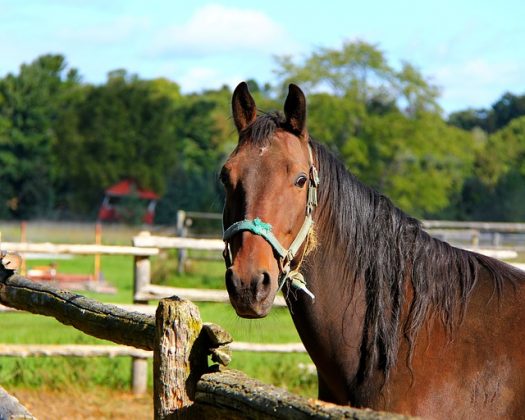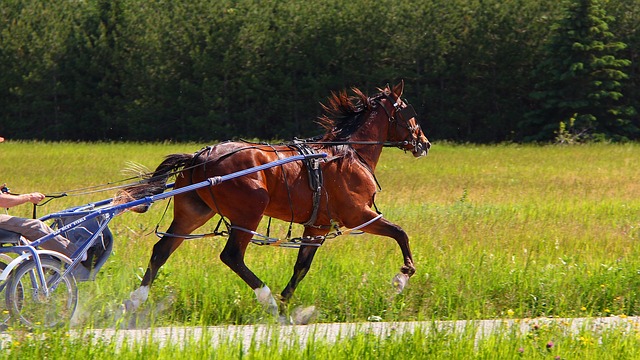When it comes to horse breeds known for their versatility and unique characteristics, the Standardbred horse stands out as a remarkable choice. Originally bred for harness racing, Standardbreds horses are now appreciated for various disciplines, including pleasure riding, driving, and jumping.
During a visit to a friend’s barn, I was captivated by the charm and personality of the Standardbred horses. Watching these majestic animals interact with their caretakers and each other, I couldn’t help but feel a deep appreciation for their gentle demeanor and undeniable intelligence. As I observed my friend effortlessly handle the horses during their training sessions, it became clear that these equines are not just athletes but also wonderful companions. This experience inspired me to explore Standardbred horses’ history, characteristics, and training methods.
A Brief History of the Standardbred
The Standardbred breed originated in the United States in the 19th century. It was developed primarily for harness racing, where horses would pull sulkies at high speeds. The breed’s name comes from the “standard” of speed set for racehorses during the early days of racing; to be classified as a Standardbred, a horse had to trot a mile in under 2:30.
The breed’s foundation includes a mix of Thoroughbreds, Morgan horses, and other breeds, contributing to their unique traits. Over time, Standardbreds have transitioned from primarily racehorses to versatile equines used in various equestrian activities, making them beloved companions for riders of all skill levels.

In the case of the Standardbred horse, the native foundation mares were trotters or pacers adapted to fast driving in harness. In contrast, the native mares molding the American saddle horse were amblers, which were easy to ride.
Standardbred Characteristics
In general, animals of this breed are smaller, longer-bodied, less leggy, and possess less quality than the Thoroughbred. Still, they show more substance and ruggedness and are more tractable. The head, ears, and bone show less refinement, and the hind legs are not quite so straight as in the Thoroughbred. Standardbred animals attain speed through the ability to extend themselves into long strides, repeated rapidly, because of the long forearm and long, narrow muscles.
In weight, the Standardbred ranges from 900 to 1,300 pounds, and in height, from 15 to 16 hands, with the average being around 15-2 hands. Bay, brown, chestnut, and black are the most common colors, but grays, roans, and duns are found. Though possessing a common ancestry, some families produce a much larger proportion of pacers than others. Many individuals show speed at both gaits. Shoeing and training are also important factors in determining whether an animal shall be a trotter or a pacer.
Temperament and Behavior
Standardbreds are known for their calm and friendly demeanor. They tend to be eager to please, making them excellent for novice and experienced riders. Their intelligence and trainability allow them to excel in various disciplines beyond racing. Regular interaction and consistent training help maintain their well-balanced temperament.
Adaptation and Use
As previously indicated, the Standardbred primarily originated as a trotting horse and provided a superior road horse in the days of the horse and buggy. He was first put under saddle and eventually into harness hitched to a sulky.
With the coming of improved highways and the automobile, the progressive breeders. Ever alert to new developments, they turned their attention almost exclusively to producing a speedy harness racehorse—either at the trot or the pace. The gameness and stamina of the Standardbred are unexcelled, thus adapting him to race heats wherein he must go mile after mile at top speed.
Legal Considerations in Care
Owners must also consider liability laws when caring for horses. In many jurisdictions, laws like the Equine Activity Liability Act protect horse owners from being held liable for injuries sustained by participants in equine activities, provided that they take reasonable care in managing their animals. However, this does not protect owners from negligence claims, so ensuring proper care and safety measures is crucial.
The Standardbred horse is a versatile and adaptable breed with a rich history and a promising future. Animals of this breed are also exhibited as light harness horses in the great horse shows of the land. The early foundation animals of the Standardbred contributed to the development of the American Saddle Horse and the Tennessee Walking Horse. Many hunters are also of Standardbred extraction. It may be said that the Standardbred has proved to be a valuable utility horse—an animal of such extraction that has speed, endurance, and a tractable disposition.





